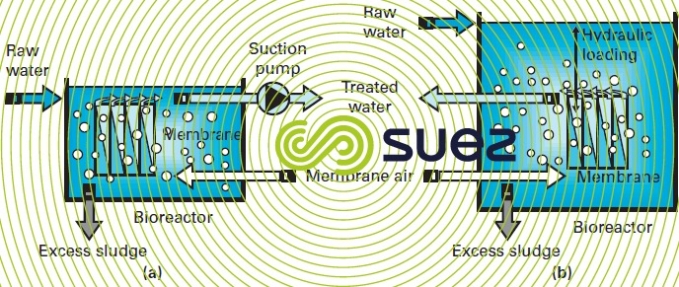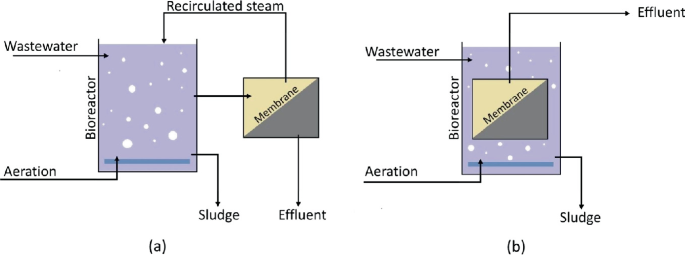Why Membrane Bioreactor Solutions Are Ideal for Sustainable Water Treatment
Why Membrane Bioreactor Solutions Are Ideal for Sustainable Water Treatment
Blog Article
How Membrane Bioreactors Are Changing Water Filtration Systems
The introduction of membrane layer bioreactors (MBRs) stands for a significant advancement in the area of water filtration, merging biological therapy procedures with innovative membrane layer purification modern technologies. As international water deficiency magnifies, the duty of MBRs in helping with safe and clean water reuse and sustainable water monitoring ends up being increasingly crucial.
Review of Membrane Bioreactors
Membrane bioreactors (MBRs) stand for a significant development in water purification modern technology, as they incorporate organic therapy procedures with membrane filtration. This integration improves the effectiveness of wastewater therapy by utilizing microorganisms to weaken organic contaminants while all at once employing semi-permeable membrane layers to different cured water from put on hold virus and solids.
The MBR system commonly includes a biological activator where the microbial population metabolizes pollutants, followed by a membrane layer purification system that maintains biomass and allows only tidy water to pass through. This twin functionality results in higher effluent top quality contrasted to traditional treatment techniques. MBRs can be operated in both set and constant circulation settings, offering versatility in style and application.
In Addition, MBRs are characterized by their portable impact, making them suitable for urban settings with area restraints. Membrane Bioreactor. They additionally make it possible for the healing of water for reuse, thus contributing to water sustainability campaigns. While MBR technology has gained popularity in commercial and local applications, its functional intricacies and power needs demand careful factor to consider throughout execution. Overall, MBRs go to the center of enhancing water treatment performance and top quality, showcasing the possibility for ingenious solutions in ecological administration.
Advantages of MBR Modern Technology
The integration of biological treatment with membrane filtering provides many advantages for water purification processes. One of the main advantages of Membrane layer Bioreactor (MBR) technology is its capability to successfully remove both organic and not natural impurities, resulting in high-grade effluent. The membranes act as a physical barrier, stopping suspended solids and pathogens from passing through, which boosts the general safety and security and reliability of cured water.
In addition, MBR systems require a smaller footprint contrasted to standard treatment methods, enabling much more efficient space usage. This compact design is specifically advantageous in metropolitan setups where land is restricted. MBRs also show functional adaptability, suiting differing influent qualities and flow rates without significant performance deterioration.
In addition, the procedure uses boosted nutrient elimination capacities, specifically for nitrogen and phosphorus, which are crucial for avoiding eutrophication in getting waters. The minimized sludge production associated with MBR modern technology also equates to lower disposal costs, making it a cost-effective service over time - Membrane Bioreactor. Generally, the benefits of MBR modern technology position it as a leading choice for lasting and ingenious water filtration systems, attending to both environmental and economic problems
Applications in Water Purification
Applications of Membrane Bioreactor (MBR) technology in water filtration are varied and impactful, resolving different treatment needs throughout multiple sectors. MBRs properly integrate biological therapy procedures with membrane purification, making them optimal for local wastewater treatment, commercial effluent management, and also potable water reuse campaigns.
In community setups, MBRs are significantly employed to improve the top quality of treated wastewater, enabling compliance with rigid discharge laws and facilitating the recycling of water for irrigation and non-potable uses. Their small style additionally makes them ideal for metropolitan settings where space is restricted.
Industrially, MBR technology is utilized to treat process water and wastewater, especially in fields such as food and beverage, pharmaceuticals, and textiles. By successfully removing pollutants and suspended solids, MBRs help industries reduce environmental influences while recouping useful sources from wastewater streams.
In Addition, MBRs are obtaining grip in decentralized water therapy applications, where small systems can be deployed in remote areas or developing areas. This flexibility makes it possible for areas to accomplish sustainable water management solutions, boosting access to clean water while reducing dependence on typical therapy approaches.
Study and Success Stories

In one more example, a fabric manufacturing center in Bangladesh embraced MBR technology to resolve its wastewater obstacles. The system reduced chemical oxygen demand (COD) levels from 1,200 mg/L to less than 100 mg/L, therefore fulfilling governing criteria and considerably lessening ecological effect.
The College of Cape Community's MBR installment has actually proven effective in treating greywater for non-potable reuse on university. This project not just preserves safe and clean water yet additionally works as an instructional model for sustainable techniques.
Furthermore, a fish and shellfish handling plant in Norway made use of MBR innovation to treat effluents including high levels of organic issue, achieving over 90% toxin removal. These study emphasize hop over to here MBR innovation's versatility and its crucial role in enhancing water quality throughout diverse applications.
Future of Water Therapy Solutions
As international water deficiency and air pollution challenges increase, ingenious water treatment solutions are becoming progressively vital to guarantee lasting accessibility to tidy water. The future of water treatment depends on the assimilation of advanced technologies that boost the performance and efficiency of filtration processes. Membrane bioreactors (MBRs) go to the leading edge of this evolution, combining biological therapy with membrane layer filtration to create high-quality effluent suitable for different applications.

Arising patterns such as resource recovery from wastewater, including nutrients and energy, will certainly better change therapy facilities into eco-friendly centers. Advancements in nanotechnology and membrane products guarantee improved efficiency and durability of filtration systems.

Conclusion
In final thought, membrane bioreactors stand for a substantial advancement in water purification technologies, efficiently integrating organic therapy with innovative membrane layer purification. The many benefits, consisting of enhanced effluent high quality and lowered spatial requirements, make MBRs particularly ideal for city applications. Their duty in safe and clean water reuse and lasting water administration highlights their value in resolving international water shortage difficulties. Continued r & d will certainly better enhance the efficiency and fostering of MBR innovation, guaranteeing a resilient future for water therapy remedies.
The appearance of membrane layer bioreactors (MBRs) represents a substantial improvement in the field of water filtration, combining biological therapy processes with sophisticated membrane layer purification innovations. As international water shortage magnifies, the duty of MBRs in helping with safe and clean water reuse and sustainable water monitoring becomes progressively critical. They likewise make it possible for the recovery of water for reuse, therefore contributing to water sustainability efforts.As worldwide water shortage and air pollution obstacles magnify, innovative water therapy options are coming to be increasingly necessary to make certain sustainable access to clean water. Their function in potable water reuse and sustainable water administration highlights their relevance in addressing global water scarcity difficulties.
Report this page